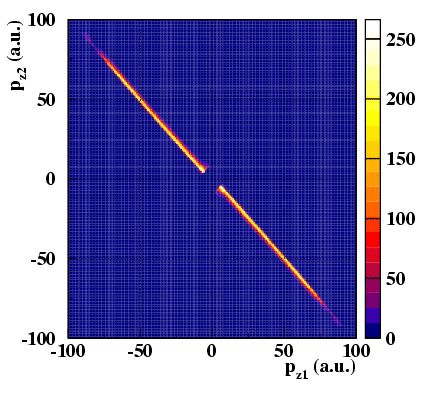Experimental Observation of Interatomic Coulombic Decay (ICD) in Neon Dimers
|
The spectral lines of photons emitted from excited atoms, ions and molecules have been used ever since their discovery as a Fingerprint of the particle's electronic structure. In 1925 Pierre Auger discovered, that in competition to the emission of these characteristic photons, excited atoms can release their energy by emission of one of their electrons in a process commonly known as "Auger decay". Seven years ago, Cederbaum et al. [1] predicted a third, additional decay mechanism termed Interatomic Coulombic Decay (ICD). This novel effect is calculated to become the dominant decay channel in many cases, once the excited atom is placed in an environment of other atoms. In that case the deexcitation energy is transferred to a neighboring atom, which releases it by emission of its most loosely bound electron. Here we report on an experimental observation of Interatomic Coulombic Decay in 2s ionized neon-dimers. The decay is unambiguously identified by detecting the energy of two Ne1+ fragments and the ICD electron in coincidence, yielding a clean experimental spectral distribution of the ICD electrons.  In order to unambiguously identify ICD in a neon dimer experimentally the momenta of the emitted particles are measured in coincidence. As Fig.2 shows, the measured momenta of the two ions are of the same magnitude but opposite direction, just as expected for the event of a coulomb exploding dimer. Furthermore, for the case of ICD, the sum of the ICD electron's energy and the kinetic energy of the ionic fragments is a constant. Therefore by looking at the relation of the electron's energy and the kinetic energy of the ionic fragments (Fig.3) events of ICD appear on a diagonal line and are therefore unambiguosly identified.   The experiment was performed in a colaboration with the group of Prof. U. Hergenhahn (Max-Planck-Institut für Plasmaphysik) at the Berlin synchrotron facility BESSY II. [1] L. S. Cederbaum, J. Zobeley, and F. Tarantelli. Phys. Rev. Lett., 79:4778, 1997. publications |
